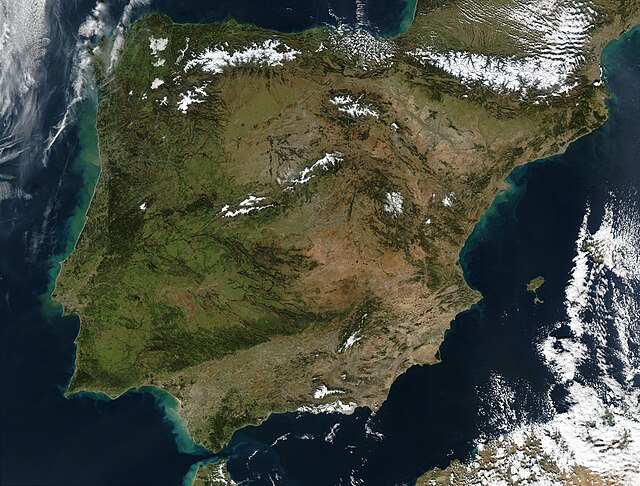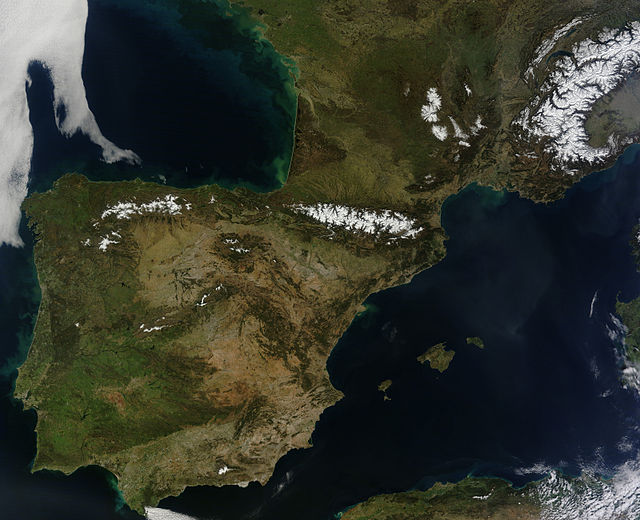Tartessos is, as defined by archaeological discoveries, a historical civilization settled in the southern Iberian Peninsula characterized by its mixture of local Paleohispanic and Phoenician traits. It had a writing system, identified as Tartessian, that includes some 97 inscriptions in a Tartessian language.
Tartessos around 500 BCE
Tartessian winged feline statue at the Getty Villa
Cancho Roano archaeological site located in Zalamea de la Serena, Extremadura
Treasure of El Carambolo, exhibited in the Archaeological Museum of Seville
The Iberian Peninsula, also known as Iberia, is a peninsula in South-western Europe, defining the westernmost edge of Eurasia. It is divided between Continental Portugal and Peninsular Spain, comprising most of the region, as well as Andorra, Gibraltar, and a small part of Southern France. With an area of approximately 583,254 square kilometres (225,196 sq mi), and a population of roughly 55 million, it is the second-largest European peninsula by area, after the Scandinavian Peninsula.
Satellite image of the Iberian Peninsula
The Iberian Peninsula and Southern France, satellite photo on a cloudless day in March 2014
A model recreating the Chalcolithic settlement of Los Millares
An instance of the Southwest Paleohispanic script inscribed in the Abóbada I stele.








